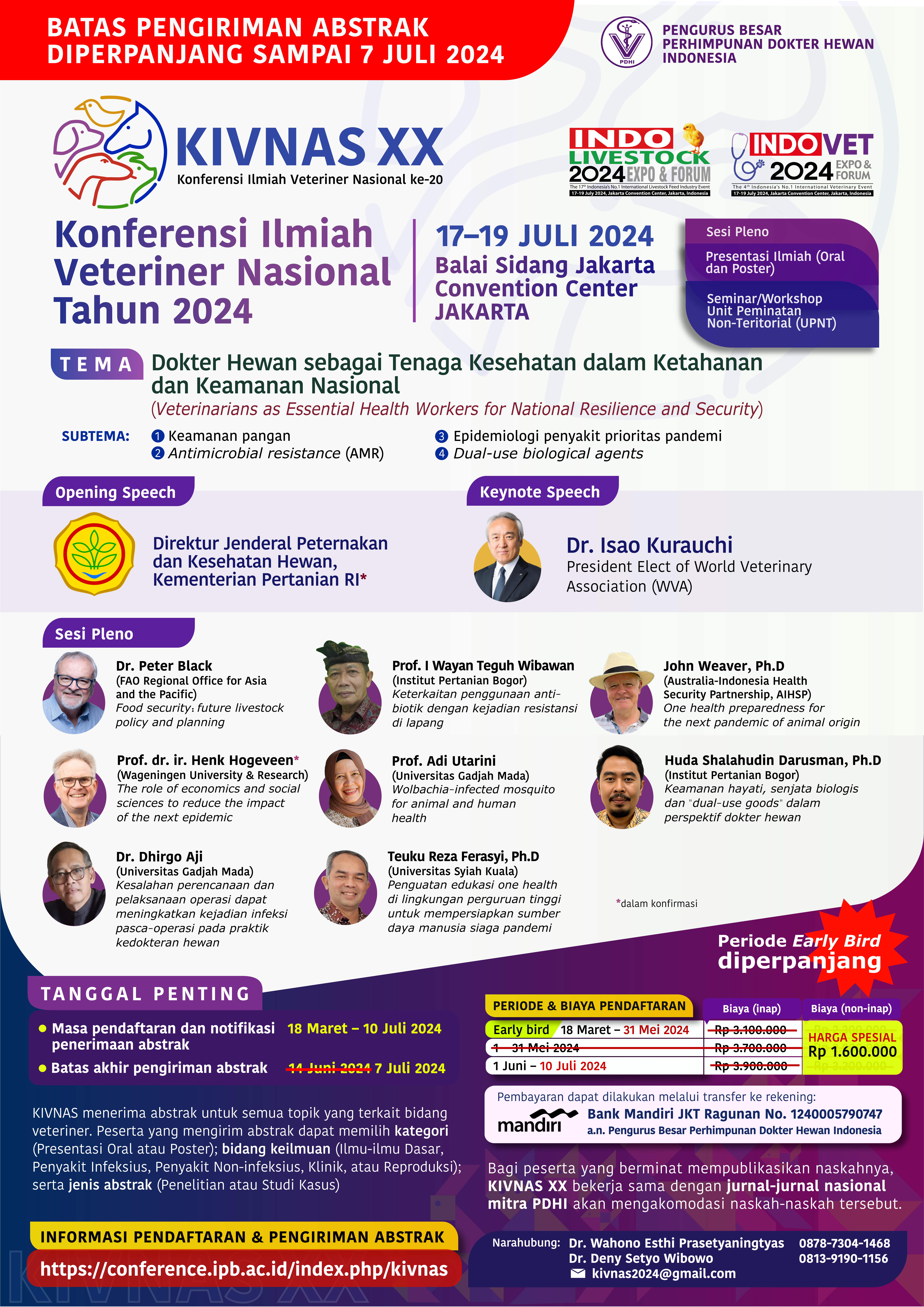Medical Management of Canine Diabetes Mellitus in a Mixed Dog in RSHP SKHB IPB University: A Case Study
Keywords:
canine diabetes mellitus, glucose, insulin, glycosuria, mixed dogAbstract
Background: Canine Diabates Mellitus is a common endocrinophaty in dogs, when the body’s inability to regulate sugar in the bloodstream. This disease is caused by inability of the pancreas to produce insulin or when the body’s cell do not respond well to insulin. Case Description: A 12 years old mixed dog was presented to Veterinary Teaching Hospital Education SKHB IPB University, with a history of decreased appetite (polyphagia), weight lost, polyuria, polydipsia, sometimes vomiting and coughing. Examination and diagnose: Physical examination of the animal showed cachexia, cloudy eyes, and a mouth that smelled of urea. Complete blood count (CBC) showed several abnormal parameters. Serum biochemical analysis revealed elevated blood glucose levels up to 663 mg/dL, blood urea nitrogen (BUN), and alkaline phosphatase. Urinalysis revealed glycosuria. This dog was diagnoses with diabetes mellitus. Treatment/Therapy: The patient was given treatment infusion therapy, feed replacement using special diabetic feed, insulin injection, and other supporting medicine. Conclusion: After 1 month of therapy the patients showed good progress as indicated by body weight increased, lowering blood glucose, and decreasing clinical symptoms (polyuria, polydipsia, and polyphagia). Though the treatment is life long, the physical activity and diet restriction are the keyways to keep the dog in tight glycemic control.



